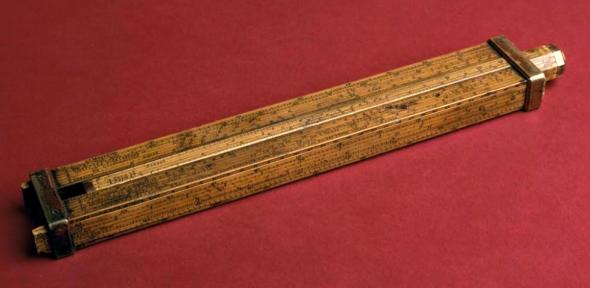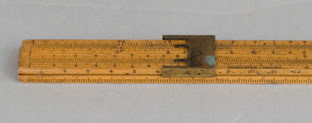As with many mathematical instruments, John Suxspeach's 'Catholic-Organon, or Universal Sliding Foot-Rule' (above) originated as a personal device. Working as a schoolmaster in Stepney, London, he was implored to make the device available to the public, securing the first Royal Patent for a slide rule in 1753.
The device itself was complex. It had a number of scales and carried two sliders, each with brass inserts, which allowed it to be used as a protractor or level. The hollow slider between the two main pieces was probably meant to hold some kind of telescope.
Suxspeach's rule was manufactured by Benjamin Parker and came with an extensive manual. Evidence suggests, however, that it was unsuccessful. Because it was not particularly suited to one purpose, uneducated professionals were not interested in mastering its use. Application-specific rules had scales that were more legible, and their purposes were more readily understood.





